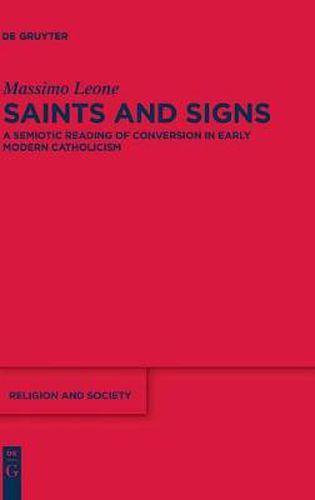Readings Newsletter
Become a Readings Member to make your shopping experience even easier.
Sign in or sign up for free!
You’re not far away from qualifying for FREE standard shipping within Australia
You’ve qualified for FREE standard shipping within Australia
The cart is loading…






Saints and Signs analyzes a corpus of hagiographies, paintings, and other materials related to four of the most prominent saints of early modern Catholicism: Ignatius of Loyola, Philip Neri, Francis Xavier, and Therese of Avila. Verbal and visual documents- produced between the end of the Council of Trent (1563) and the beginning of the pontificate of Urban VIII (1623)- are placed in their historical context and analyzed through semiotics- the discipline that studies signification and communication- in order to answer the following questions: How did these four saints become signs of the renewal of Catholic spirituality after the Reformation? How did their verbal and visual representations promote new Catholic models of religious conversion? How did this huge effort of spiritual propaganda change the modern idea of communication? The book is divided into four sections, focusing on the four saints and on the particular topics related to their hagiologic identity: early modern theological debates on grace (Ignatius of Loyola); cultural contaminations between Catholic internal and external missions (Philip Neri); the Christian identity in relation to non-Christian territories (Francis Xavier); the status of women in early modern Catholicism (Therese of Avila).
$9.00 standard shipping within Australia
FREE standard shipping within Australia for orders over $100.00
Express & International shipping calculated at checkout
Saints and Signs analyzes a corpus of hagiographies, paintings, and other materials related to four of the most prominent saints of early modern Catholicism: Ignatius of Loyola, Philip Neri, Francis Xavier, and Therese of Avila. Verbal and visual documents- produced between the end of the Council of Trent (1563) and the beginning of the pontificate of Urban VIII (1623)- are placed in their historical context and analyzed through semiotics- the discipline that studies signification and communication- in order to answer the following questions: How did these four saints become signs of the renewal of Catholic spirituality after the Reformation? How did their verbal and visual representations promote new Catholic models of religious conversion? How did this huge effort of spiritual propaganda change the modern idea of communication? The book is divided into four sections, focusing on the four saints and on the particular topics related to their hagiologic identity: early modern theological debates on grace (Ignatius of Loyola); cultural contaminations between Catholic internal and external missions (Philip Neri); the Christian identity in relation to non-Christian territories (Francis Xavier); the status of women in early modern Catholicism (Therese of Avila).